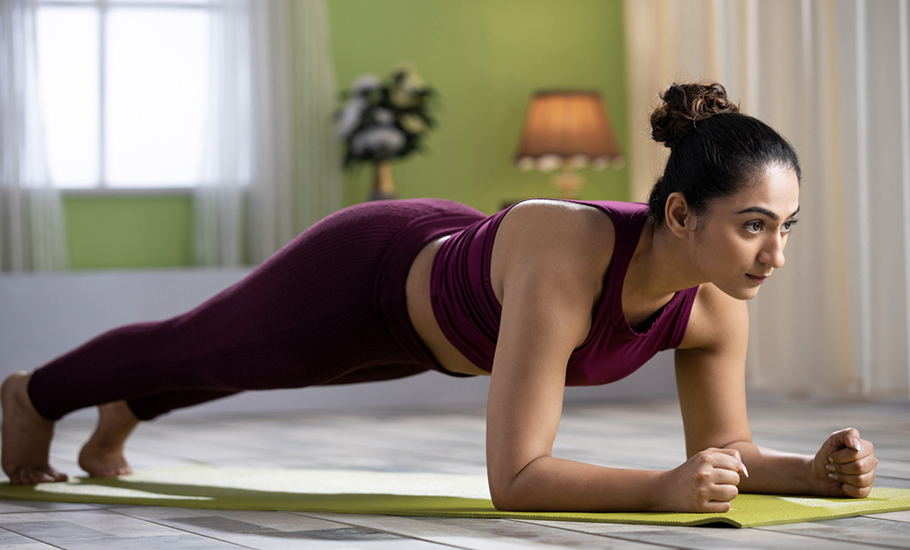If you were advised to increase your physical activity to lower your blood pressure, you might assume that you would need to don your running gear or go to the weight room. The best workouts for lowering blood pressure, however, are those that you keep in a static position, such as planks and wall sits, according to new research by one of us (Jamie).
This type of “isometric” exercise entails contracting and retaining a particular muscle or muscle group so that its length remains constant throughout the activity.
But performing this kind of exercise has other advantages besides only lowering blood pressure.
They improve heart health
Jamie’s most recent research examined 270 randomised controlled studies with a total of more than 15,000 individuals. It was discovered that performing an average of three isometric exercises each week was the most effective strategy to lower blood pressure.
Each session included four sets of two-minute isometric exercises separated by one to four minutes of rest. The subsequent drop in blood pressure was comparable to that experienced by individuals on conventional blood pressure medication.
Jamie’s study team has also demonstrated that isometric exercise enhances the structure, mechanics, and function of our hearts as well as the health of our vascular system and autonomic nervous system. For a healthy heart and reduced risk of disease, each of these adjustments is crucial.
Isometrics’ special ability to hold a static muscle contraction may be the reason they are so beneficial for our cardiovascular health, despite the fact that it is a challenging scientific field. When the isometric hold is released, the compressed blood vessels receive more blood flow. This compresses the blood vessels.

They improve joint health
When we move, our ligaments are crucial in keeping our joints stable. However, putting too much strain on a ligament, as when landing on one leg when jumping, might result in damage. One example of a ligament injury that significantly affects one’s health is anterior crutiate ligament (ACL) rupture.
However, by aiding in the creation of stability around a joint, our muscles play a significant part in minimizing the force applied to our ligaments. And studies have shown that strengthening particular muscle groups with isometric workouts helps ease strain on particular ligaments.
For instance, one study discovered that strengthening the hamstrings—a set of muscles that runs from hip to knee along the back of your thigh—helped relieve pressure on the ACL. This might help shield this ligament from potential harm.
They help address muscle imbalances
It’s typical to have stronger muscles on one side of your body than the other. This is referred to be “limb dominance,” and it is partially caused by whatever we prefer to utilize on one side of our bodies over the other.
It may also occur as a result of your body adjusting to the demands of activities like football, volleyball, and basketball that impose more of a demand on one side of the body than on the other.
While having stronger muscles on one side of the body than the other is generally not a problem, it can raise the risk of injury and have an impact on an athlete’s performance. However, as they only work one side of the body, unilateral (one-sided) isometric exercises like the split squat or side plank may help lessen strength disparities between limbs.

They improve performance
Strength can be increased in certain stationary positions with the help of isometric workouts. This is so that very particular muscles or muscle groups can be activated during isometric exercises.
Isometric exercises frequently simulate difficult situations like the jam jar lid, the sticking point at the bottom of a squat, and rugby scrums. They can therefore aid in developing the strength needed to withstand the stress exerted on the body during physical activity, athletic competition, and daily living. This might enhance daily physical performance or athletic performance.
They’re easily tolerated
For those healing from musculoskeletal ailments, isometric exercises are frequently utilized as part of physiotherapy and sports therapy rehabilitation programs. This is due to the fact that they may be carried out with restricted movement and in situations when discomfort may be a barrier.
Exercises that involve little movement, like isometrics, can be more acceptable because they are done in a static position. Similar to this, people with limited mobility can select a comfortable posture to carry out the exercise. For example, if a person has limited hip mobility, they can change the height of a wall squat.
They’re time efficient
For those healing from musculoskeletal ailments, isometric exercises are frequently utilized as part of physiotherapy and sports therapy rehabilitation programs. This is due to the fact that they may be carried out with restricted movement and in situations when discomfort may be a barrier.
Exercises that involve little movement, like isometrics, can be more acceptable because they are done in a static position. Similar to this, people with limited mobility can select a comfortable posture to carry out the exercise. For example, if a person has limited hip mobility, they can change the height of a wall squat.